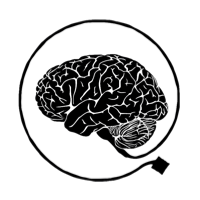In Chap. 6 of his book LOT 2, Jerry Fodor runs an argument for the existence of nonconceptual content based on Sperling’s experiments from the 1960s. Sperling (followed by Fodor) explained his results by postulating the “echoic buffer” or “echoic store”, which is a perceptual system that maintains an image of what is perceived for a very brief period of time. In classical cognitive psychological theories such as Sperling’s, the echoic buffer is distinct from both short term memory and long term memory.
I haven’t heard any serious reference to the echoic buffer in recent years, nor anyone who uses this kind of term in recent research. I used to assume that people had abandoned that old-fashioned notion, to replace it and all other perceptual systems (as they used to be conceptualized by classical cognitive psychology) with the different sensory areas of the cortex and the different stages of perceptual processing that occur in the different sensory areas.
Now this Fodorian reference makes me wonder: did I miss something? Does anyone know what happened to the echoic buffer, and theories thereof, since the 1960s?

Heh, I found myself suggesting reviewing literature on echoic buffer (or ultra-short term memory, as it is sometimes called) to Michał Klincewicz who presented a poster on this year’s ASSC in Berlin. He was surprised with the suggestion, as most people seem not to know about these experiments.
Jackendoff made some references to echoic buffer back in 1980s.
Isn’t it the same as iconic memory? If so, it’s alive and well. Echoic buffer may be an anachronistic term, though.
Hey Gualtiero, how are things?
Sperling’s work on iconic memory seems to be still widely discussed. In the 80s, Max Coltheart published a series of influential papers discussing the significance of Sperling’s result. In philosophy, Dretske famously used Sperling’s results in his 1981 book. More recently, there’s been a lot of discussion around Ned Block’s use of Sperling’s experiments, as well as of similar results by Landman et al.
Check out Block’s 2007 BBS piece and the discussion following it. Pashler’s 1998 ‘Psychology of Attention’ has a helpful survey of the empirical literature. Coltheart himself has an entry on this in the recent Oxford Companion to Consciousness.
Philippe is right that Sperling’s work is still being discussed, but the term ‘echoic memory’ is passe as far as I can tell. I suspect this is because of the dominance of Baddeley’s model of working memory, which incorporates a phonological loop instead. The construct of (visual) iconic memory seems to survive in Robert Logie’s (1995) refinement of Baddeley’s visuospatial sketchpad component. On Logie’s view, the sketchpad has a passive visual cache and an active inner scribe. The former seems to do some of what the iconic buffer did. Presumably to rehabilitate echoic memory one would want to amend the phonological component of Baddeley’s model to incorporate a similar very-short-term, executive-independent store as well. Just relabeling the parts, really.
I’m not entirely sure, but I think that the echoic buffer is to auditory perception what the iconic buffer is to vision. You might want to look in hearing science.
I think the echoic buffer has, sadly, been slowly forgotten over time. Kind of sad, as I was intrigued by the concept.